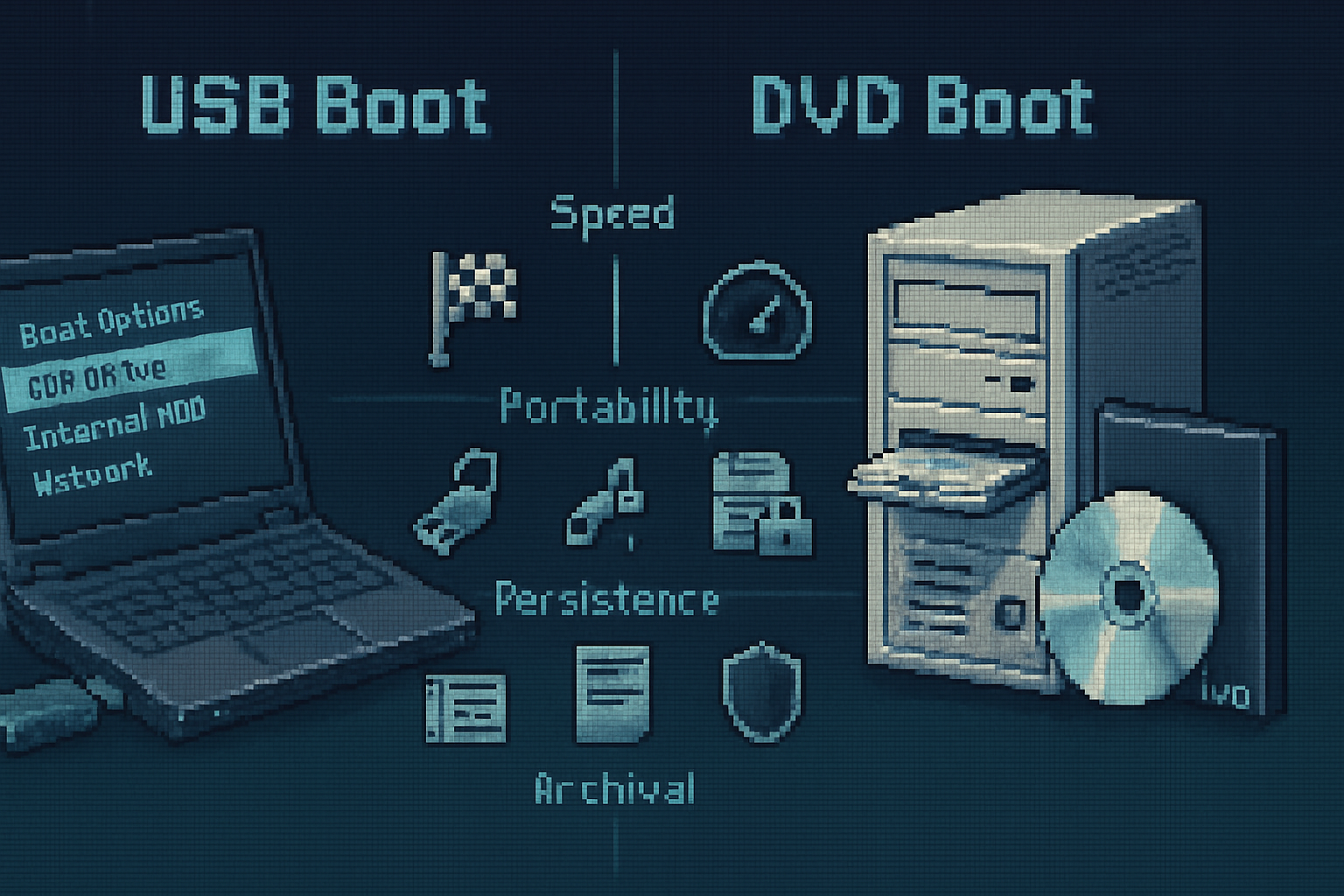· guides · 3 min read
How to Troubleshoot Bootable USB Drive Issues
Learn how to identify and resolve common problems encountered when creating or using bootable USB drives with our troubleshooting guide.
Introduction
Bootable USB drives are essential tools for installing operating systems, running diagnostic tools, and performing system repairs. However, users often encounter various issues during the creation and usage of these drives. In this article, we will discuss common problems and effective solutions to troubleshoot bootable USB drive issues.

Common Issues
1. USB Drive Not Recognized
One of the most frustrating issues is when your computer fails to recognize the bootable USB drive. This can be caused by several factors including:
- USB port malfunction
- Incorrect BIOS settings
- Incompatible file system
Solution:
- Test USB Ports: Try connecting the USB drive to different ports; preferably USB 2.0 ports as older hardware often supports these better.
- Check BIOS Settings: Restart your computer, enter the BIOS/UEFI settings, and ensure that USB booting is enabled.
- Format USB Drive: If using Windows, format the drive using FAT32 for best compatibility (Windows’ Disk Management tool can assist in this). For Linux, you may use
mkfs.vfat.
2. Boot Failure
If the USB drive is recognized but the system fails to boot from it, this may be due to:
- Corrupted files on the USB drive
- Incorrect boot order in BIOS
- Missing or erroneous boot files
Solution:
- Recreate the Bootable USB: Use reliable software like Rufus or UNetbootin to recreate your bootable USB drive. Make sure to use the correct ISO file.
- Check Boot Order: Enter BIOS/UEFI settings and ensure the USB drive is set as the primary boot device.
3. Filesystem Compatibility Issues
Some operating systems may not recognize the file system of the USB drive.
Solution:
- Use Proper Filesystem Format: Windows often prefers NTFS for larger ISO images while Linux requires ext4. Ensure you use an appropriate format based on the target machine’s OS. Use formatting tools for better results.
4. Insufficient Space
Sometimes, errors during the creation process can leave the USB drive with insufficient space for the needed files.
Solution:
- Free Space: Make sure the USB drive is large enough to hold the operating system image. 8GB or larger is generally recommended.
- Erase the USB Drive: Use disk management tools or commands to entirely wipe data from the USB drive before making it bootable again.
Additional Tips
- Always Safely Eject USB Drive: Helps prevent corruption.
- Keep USB Firmware Updated: Sometimes firmware updates can resolve connectivity issues.
- Test on Another Computer: If possible, test the bootable USB on different computers to determine whether the problem is hardware related.
Conclusion
While creating and using a bootable USB drive can come with its share of challenges, most issues can be effectively troubleshot by following the above steps. With some patience and the right approach, you can ensure that your bootable USB drive works flawlessly for your needs.

References
- Rufus: Create bootable USB drives
- UNetbootin: Create bootable live USB drives
- How to Check BIOS Settings
Using this guide, you can create a more reliable bootable USB environment and tackle issues as they arise, ensuring smooth operations whenever you need to boot from USB.
